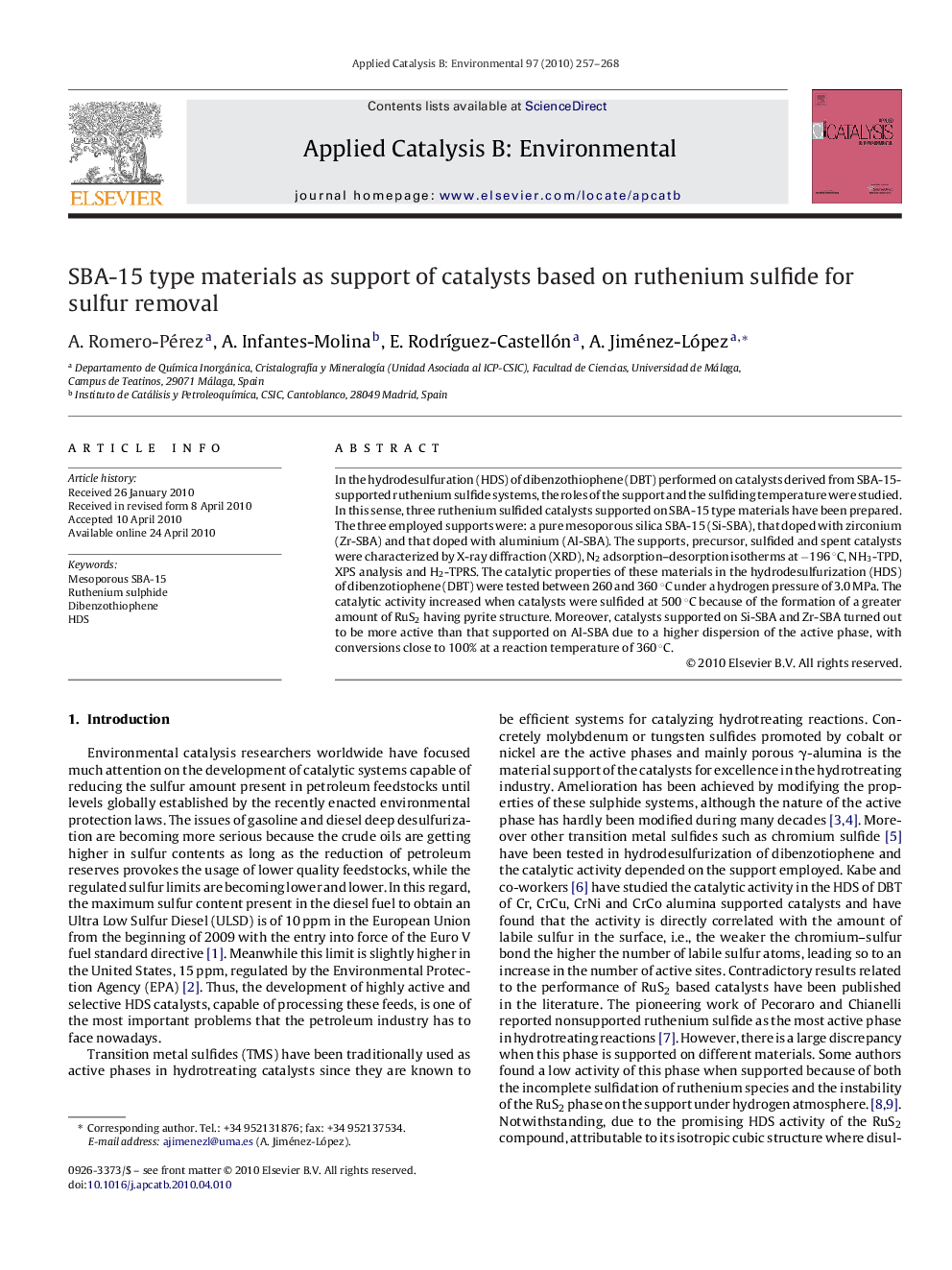| Article ID | Journal | Published Year | Pages | File Type |
|---|---|---|---|---|
| 47302 | Applied Catalysis B: Environmental | 2010 | 12 Pages |
In the hydrodesulfuration (HDS) of dibenzothiophene (DBT) performed on catalysts derived from SBA-15-supported ruthenium sulfide systems, the roles of the support and the sulfiding temperature were studied. In this sense, three ruthenium sulfided catalysts supported on SBA-15 type materials have been prepared. The three employed supports were: a pure mesoporous silica SBA-15 (Si-SBA), that doped with zirconium (Zr-SBA) and that doped with aluminium (Al-SBA). The supports, precursor, sulfided and spent catalysts were characterized by X-ray diffraction (XRD), N2 adsorption–desorption isotherms at −196 °C, NH3-TPD, XPS analysis and H2-TPRS. The catalytic properties of these materials in the hydrodesulfurization (HDS) of dibenzotiophene (DBT) were tested between 260 and 360 °C under a hydrogen pressure of 3.0 MPa. The catalytic activity increased when catalysts were sulfided at 500 °C because of the formation of a greater amount of RuS2 having pyrite structure. Moreover, catalysts supported on Si-SBA and Zr-SBA turned out to be more active than that supported on Al-SBA due to a higher dispersion of the active phase, with conversions close to 100% at a reaction temperature of 360 °C.
